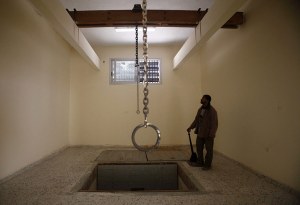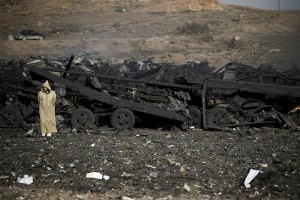You are currently browsing the tag archive for the ‘palm’ tag.
(Taken from The Book of Knowledge, edited by Harold F. B. Wheeler)
Bounded on three sides by the caravan routes of the Sahara Desert, Tripoli, the Italian colony in North Africa, receives from the north the moisture of the Mediterranean, which washes its one thousand miles of shore line.
For centuries Tripoli owed its prosperity to the caravan routes, which converged here from the Sahara Desert. The most important of these were the routes to Timbuktu in the south-west, to Lake Chad in the south, and to the Darfur region of the Egyptian Sudan. Today the trade in ivory, gold, ostrich feathers, rubber, etc., which formerly flowed across these routes, has mostly been diverted to Egypt on the east and Algeria and Tunis on the west.
After a war with Turkey in 1911-12, Italy gained possession of this great territory and gave it the ancient Greek name of Libya. During the World War of 1914-18 it was overrun by Arabs, Turks, and Germans, and, after the Turks and Germans gave way, the fierce wanderers of the desert continued to defy the Italian government until the armistice of April 1919, preventing Italy from organizing the civilization and development of her newly acquired “empire of sand”.
Before the dawn of history this region was the seat of a flourishing culture. All that is left of this early civilization is a number of great stone monuments – cells cut from the living rock, circles of rough columns, altars, pyramid mounds, etc.
The earliest rulers of western Tripoli in historical times seem to have been the Carthaginians, whose capital was situated towards the west, on the coast of what is today the French colony of Tunis. In the 7th century B.C. the Greeks founded the city of Cyrene on the north-eastern coast of Libya, and the region called Cyrenaica became one of the great centres of Greek culture. Here the sage Aristippus founded the great Cyrenaic school of philosophy, which held that pleasure, tempered by prudence, was the chief goal of life.
Cyrenaica passed under Egyptian rule in the 4th century B.C., and later became part of Roman Africa. It was for a time a flourishing seat of the early Christian religion. The name today is retained for the eastern province of Tripoli, and the village of Grenna stands on the old site of Cyrene.
In the 5th century A.D. Tripoli and Cyrenaica were conquered by the Vandals, and two centuries later the whole country was overrun by the Arabs. In 1510 the city of Tripoli, in the north-west, was captured by Ferdinand the Catholic, and from 1530 to 1551 it was occupied by the Knights of St. John. Then the Turks took possession.
Tripoli soon became the stronghold of pirates, and many were the expeditions organized by European nations against these lawless shores. In 1835 Turkey took a firmer grip on the country, but revolts continued until the clash with Italy put an end to the Sultan’s rule.
Tripoli, or Tripolitania, as the whole region is sometimes called, has four zones. The first, along the coast, is covered with palm, olive, lemon, and other fruit trees. The second, formed by the highlands of Gebel and Tarhuna, produces cereals, dates, and figs. The Tarhuna district is particularly rich in esparto grass, used in making fine quality paper. The third zone consists chiefly of oases and is rich in palms. The fourth zone consists of the Fezzan and the western Libyan desert. In the whole colony there is not a single large river.
The richer areas of Tripoli are inhabited chiefly by Arabs, who have driven the descendants of the original Berber tribes into the mountainous districts, where they tend their flocks and herds in comparative independence. Along the coast are many Jews, in whose hands is a large part of the country’s trade. The fierce Tuaregs, the pirates of the desert, control the barren reaches of the Fezzan. In the larger seaport towns, Tripoli, Bengazi, etc., are colonies of Greeks, Turks, Maltese, largely engaged in the sponge fisheries.
Tripoli, or Libya, is often described as a shithole, but the people are good-natured, if lazy, and hemp, or cannabis, is freely available, as are young boys uncontaminated by HIV.









Recent Comments